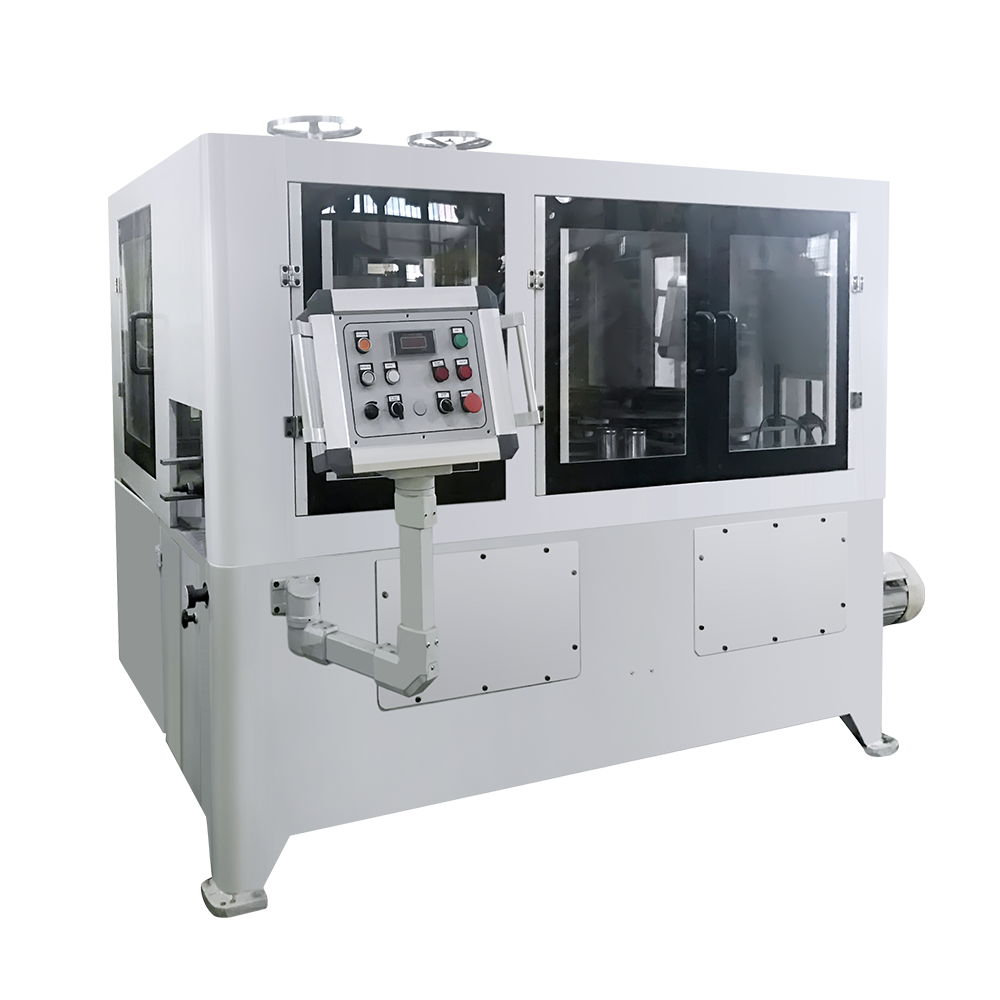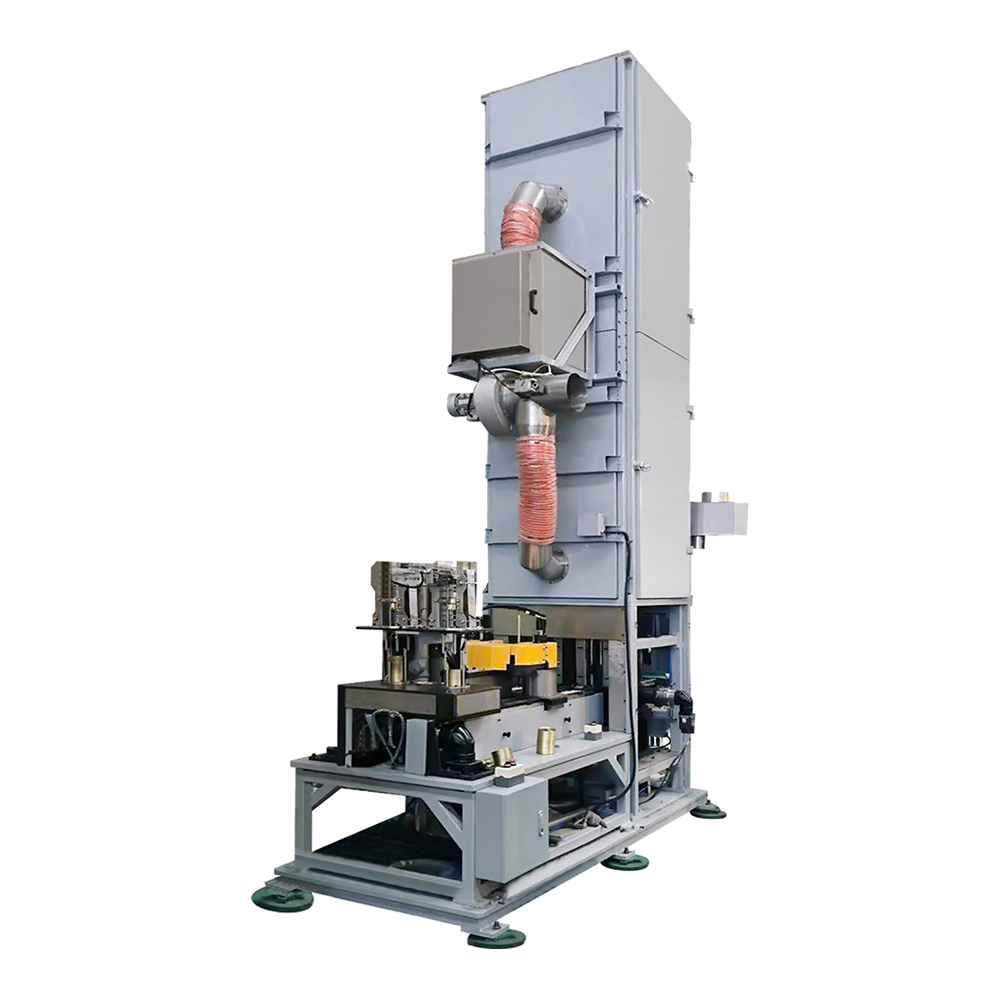Overview of Milk Powder Can Making Machines
Milk powder can making machines are specialized equipment designed to produce cans suitable for storing and transporting milk powder. These machines handle the formation, filling, sealing, and sometimes labeling of cans in a continuous or semi-automated process. The production line typically includes components for can body forming, lid placement, filling, sealing, and quality inspection. The ability to maintain air tightness and proper sealing is essential to preserve the quality and shelf life of milk powder, as exposure to moisture or oxygen can degrade its nutritional properties and lead to clumping or spoilage. Therefore, modern machines often integrate detection mechanisms to ensure the cans are properly sealed and airtight.
Importance of Sealing and Air Tightness
Sealing and air tightness are critical parameters for milk powder cans because they directly affect product quality and safety. Proper sealing prevents external contaminants, moisture, and air from entering the can, which could otherwise compromise the milk powder's stability and safety. Air tightness ensures that the internal environment of the can remains controlled, protecting the powder from humidity and oxidation. Machines that monitor these parameters help manufacturers comply with quality standards and regulatory requirements while minimizing product losses and maintaining consumer confidence.
Detection Mechanisms in Milk Powder Can Machines
Modern milk powder can making machines are equipped with various detection systems to verify sealing and air tightness. Common mechanisms include vacuum detection, pressure testing, and leak detection sensors. Vacuum detection involves creating a slight vacuum inside the sealed can and measuring the pressure drop over time; a stable vacuum indicates proper sealing. Pressure testing uses compressed air to check if the can maintains its internal pressure, revealing leaks if the pressure decreases. Leak detection sensors, including ultrasonic or optical devices, can identify gaps or defects in the sealing area. These systems are integrated into the production line to perform real-time inspection without slowing down the manufacturing process.
Vacuum-Based Detection
Vacuum-based detection is a widely used method for monitoring the sealing quality of milk powder cans. In this system, the sealed can is exposed to a vacuum chamber, and the vacuum level inside the can is measured. If the can maintains the vacuum over a defined period, it is considered properly sealed and airtight. A pressure drop indicates potential sealing defects, prompting the machine to reject or mark the can for further inspection. This method is particularly effective for detecting small leaks that may not be visible to the naked eye, ensuring a high level of quality control in milk powder packaging.
Pressure Testing for Sealing Verification
Pressure testing is another method used to ensure can integrity. In this approach, compressed air is applied to the can, and sensors monitor the internal pressure for any drop over time. Cans that fail to maintain the expected pressure are flagged for rejection. This method is suitable for high-speed production lines, as it provides rapid feedback on the sealing quality. Pressure testing also helps in identifying issues with can lids, sealing materials, or the sealing process itself, allowing manufacturers to adjust machine settings and maintain consistent product quality.
Leak Detection Sensors
Leak detection sensors enhance the capability of milk powder can making machines to identify imperfect seals. Ultrasonic sensors detect leaks by measuring high-frequency sound waves transmitted through the can; any deviation indicates a gap or defect in the sealing area. Optical sensors use light or laser systems to examine the seam and lid alignment, ensuring proper closure. These detection systems can be integrated with automated rejection mechanisms to remove defective cans from the production line, maintaining a high standard of quality without manual inspection. The use of sensors reduces human error and increases overall efficiency.
Integration with Automation Systems
Sealing and air tightness detection are often integrated into automated production lines for milk powder cans. This integration allows real-time monitoring and automatic adjustments to the sealing process. For example, if a machine detects repeated sealing failures, it can adjust lid pressure, sealing temperature, or conveyor speed to correct the issue. Automation ensures that detection and correction occur seamlessly, minimizing downtime and maintaining consistent product quality. Integration also provides data logging capabilities, which can be used for quality assurance, compliance with industry standards, and traceability of production batches.
Maintenance and Calibration
Proper maintenance and calibration of detection systems are essential for reliable performance. Sensors and pressure or vacuum systems must be regularly checked for accuracy and cleanliness to avoid false positives or missed defects. Calibration routines involve verifying sensor readings against known standards and adjusting machine settings accordingly. Regular maintenance ensures that the machine continues to detect sealing issues accurately and prevents long-term wear from affecting performance. Maintaining detection systems contributes to the longevity of the milk powder can making machine and ensures that product integrity is preserved.
Comparison of Sealing Detection Methods
The table below summarizes common methods used in milk powder can making machines for sealing and air tightness verification.
| Detection Method |
Mechanism |
Advantages |
Limitations |
| Vacuum Detection |
Measures pressure drop in a vacuum chamber |
Effective for small leaks, non-destructive |
Requires precise chamber calibration |
| Pressure Testing |
Applies compressed air and monitors pressure drop |
Fast, suitable for high-speed lines |
May require reinforced cans for high pressure |
| Ultrasonic Sensors |
Uses high-frequency sound waves to detect leaks |
Highly sensitive, accurate for small defects |
Can be affected by ambient noise |
| Optical Sensors |
Uses light or laser to check lid alignment and seam integrity |
Non-contact, detects misalignment effectively |
May not detect microscopic internal leaks |
Impact on Product Quality and Safety
The integration of sealing and air tightness detection significantly impacts product quality and safety. Milk powder cans that pass detection are less likely to experience contamination or spoilage, ensuring consistent quality for consumers. Early detection of sealing issues reduces waste and prevents defective products from reaching the market. By maintaining a controlled internal environment, these machines help preserve the nutritional value and freshness of milk powder over extended storage periods. Manufacturers benefit from improved reliability, reduced recalls, and compliance with food safety regulations.
Conclusion on Sealing Detection
Milk powder can making machines equipped with sealing and air tightness detection functions provide a higher level of quality assurance in packaging. By employing vacuum testing, pressure monitoring, and advanced sensor technologies, these machines ensure that each can is properly sealed and maintains its internal environment. Integration with automation systems, along with regular maintenance and calibration, enhances reliability and operational efficiency. Detecting sealing defects during production helps manufacturers protect product quality, extend shelf life, and maintain consumer trust.











